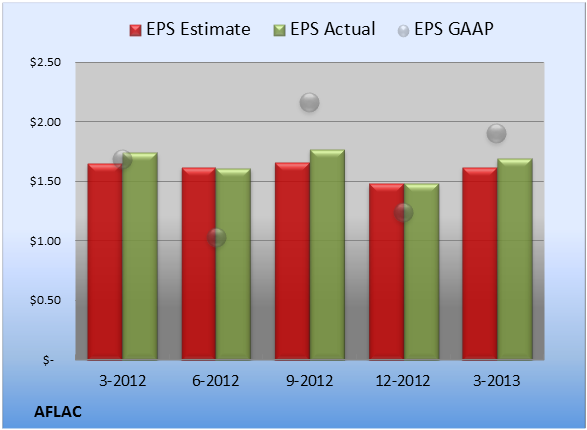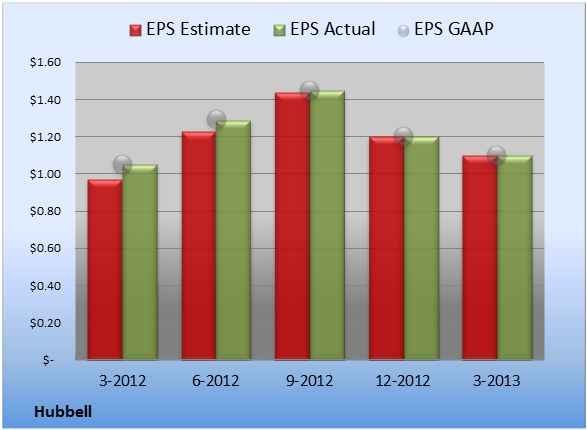It's not a great time to be a Microsoft (NASDAQ: MSFT ) stock investor. The stock has taken a few hits over the past six months, Windows 8 has received plenty of negative feedback, and the company is still trying to find its bearings in mobile.
On the heels of Microsoft's latest quarterly earnings release last week, the company is about to pursue a new area that will hopefully help Microsoft stock investors -- a smaller tablet. It's anything but a sure bet for a company that's struggled in the mobile space, but it's definitely a move in the right direction.
Betting on small
IDC came out with some numbers earlier this month showing that PC sales had dropped almost 14% year over year, almost double what had been forecasted. It was the fourth consecutive quarter of year-on-year declines and the worst PC sales quarter since the company started tracking the data in 1994.
Obviously, things aren't looking good for the PC industry, but that's not really news.
What Microsoft investors need to be concerned about is how the company is going to pivot away from a dying PC trend into a solid tablet position. So far, the company is making some slow progress. The Surface RT launched back in October, followed by the Pro in January, and estimates for Surface shipments in Q1 2013 are at about 3 million.
But while the Redmond company has been busy trying to sell its full-sized tablets, small tablets have become the mobile market's latest trend. IDC numbers show that half of all tablets shipped in Q4 2012 were smaller than 8 inches. Apple (NASDAQ: AAPL ) launched the iPad Mini back in October 2012 and has sold about 12.5 million units in Q2 2013 alone. Devices running on Google's (NASDAQ: GOOG ) Android OS also dominate the tablet market, and Google itself even sells its own Nexus tablet. Amazon.com's (NASDAQ: AMZN ) modified Android tablets currently take third place for tablet shipments.
Here's a look at the latest tablet market share figures (including both regular tablets and small tablets) from Strategy Analytics:
| Apple iOS | 48.2% |
| Android | 43.4% |
| Windows | 7.5% |
| Others | 1% |
Source: Strategy Analytics.
Although Microsoft is making some inroads in the tablet operating system market, it's clear that it has a long way to go. Microsoft executives said on the latest investors conference call that a new device will be available in the coming months. Meanwhile, the major tablet players have already solidified their positions. Microsoft stock investors shouldn't be pleased that the company is behind yet another mobile trend.
With the company's forthcoming release of Windows Blue in addition to a smaller tablet, it's possible Microsoft could lure more consumers away from Android and iPad tablets, but investors will need to see improvements to Microsoft's mobile OS to see that happen. Software sells mobile devices, and despite the company's strong history in software, Microsoft is still falling far behind Apple and Google's operating systems. The smaller tablet market isn't a lost cause for the company, but it's going to pose yet another challenge to the company's upward mobile battle.
It's incredible to think just how much of our digital and technological lives are almost entirely shaped and molded by just a handful of companies. Find out "Who Will Win the War Between the 5 Biggest Tech Stocks" in The Motley Fool's latest free report, which details the knock-down, drag-out battle being waged among the five kings of tech. Click here to keep reading.









 Bill Greene/The Boston Globe via Getty Images Women desperate to hear from loved ones can't enter the scene at Boylston and Massachusetts Avenue after two explosions went off near the finish line of the 117th Boston Marathon on April 15. As the details of the Boston Marathon bombing emerged Monday, I noticed that one of my coworkers was speedily typing, texting, and monitoring all his lines of communication. It wasn't hard to figure out what was going on: a Massachusetts native, he was checking up on his friends and family.
Bill Greene/The Boston Globe via Getty Images Women desperate to hear from loved ones can't enter the scene at Boylston and Massachusetts Avenue after two explosions went off near the finish line of the 117th Boston Marathon on April 15. As the details of the Boston Marathon bombing emerged Monday, I noticed that one of my coworkers was speedily typing, texting, and monitoring all his lines of communication. It wasn't hard to figure out what was going on: a Massachusetts native, he was checking up on his friends and family.